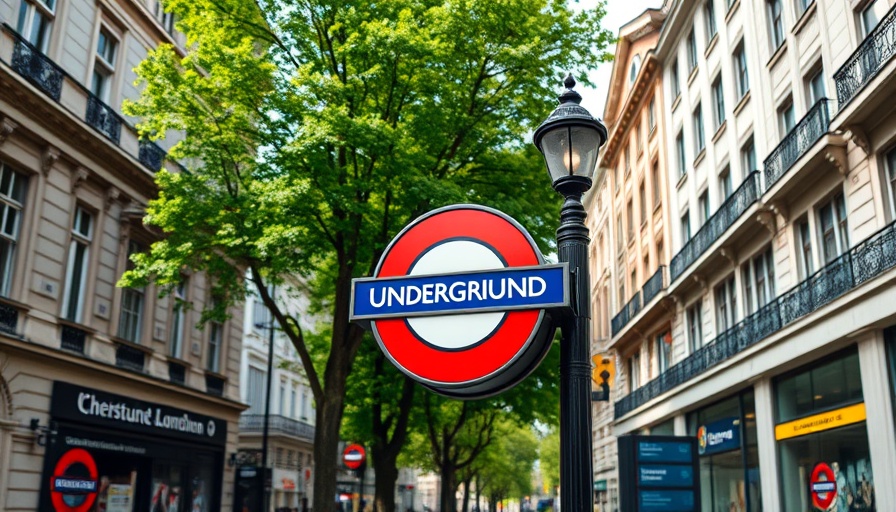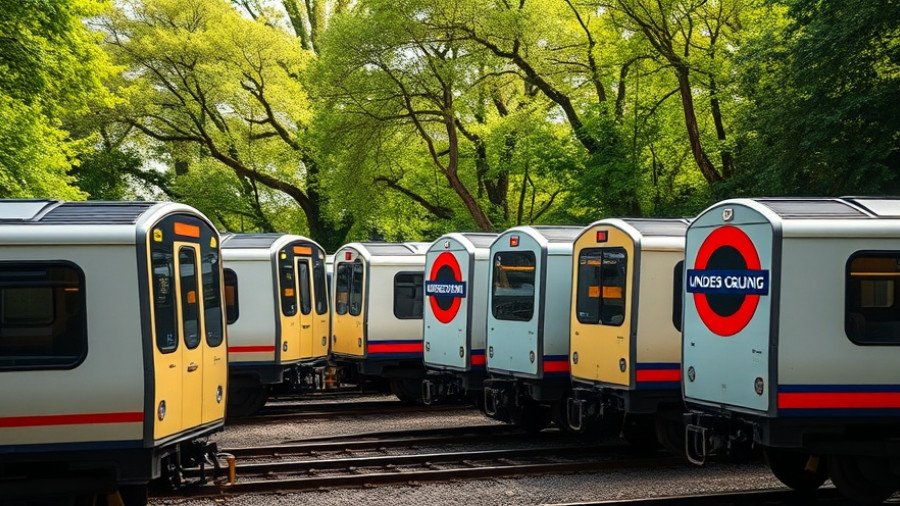
Discovering the Hidden Legends of the London Underground
Deep within the hustle and bustle of London, hidden stories await to be uncovered, especially in the posh neighborhoods where history meets innovation. In Bayswater, West London, two seemingly ordinary Victorian homes, numbers 23 and 24 Leinster Gardens, carry a secret that reflects the creative lengths taken to maintain the aesthetic of this affluent area.
The Clever Facades of Bayswater
At first glance, 23 and 24 Leinster Gardens appear as fine examples of Victorian architecture. However, a closer inspection reveals the truth: these are not actual homes. Built in the late 1800s, these facades were ingeniously designed to mask the ventilation shafts of the Metropolitan Line beneath. This clever ruse ensured that the integrity of the neighborhood remained intact, avoiding potential controversies related to the underground train’s operational mechanics.
Initially constructed using coal-powered steam engines, the Metropolitan Line faced serious ventilation issues. While early engineers employed condensers to mitigate smoke issues, they needed to vent excess fumes somewhere, making these backless homes a necessity as much as a creative solution.
Understanding the 'Cut and Cover' Method
To appreciate the significance of these facades, it's essential to understand the 'cut and cover' building technique employed during the construction of the Tube. This method involved digging a trench, laying the railway, and covering it, allowing the street above to continue its life as if nothing had changed. This preservation effort was crucial to maintain the appeal of a wealthy neighborhood filled with meticulously maintained properties.
The juxtaposition of historical architectural beauty and the practical necessity of urban infrastructure brings an interesting dynamic to the area. After all, Victorian developers had their priorities in line with the sensibilities of their wealthy clientele.
A Glimpse into London's Engineering Brilliance
The story of the facades at Leinster Gardens is not just a testament to clever engineering; it spotlights the rich tapestry of stories woven into the London Underground. This unique encounter with the Tube offers modern homeowners a nostalgic insight into the city’s past, showing how functionality and aesthetics could meet even in the most upscale settings.
Current Preservation Efforts
Today, the facades are under the care of Transport for London (TfL), emphasizing the importance of preserving historical elements even as the city evolves. Residents and visitors are encouraged to appreciate these structures, not just for their exterior, but for the intricate histories they represent.
If you ever find yourself wandering down Porchester Terrace, be sure to cast a glance at the back of these faux homes, where the reality of the railway peeks through. It’s a rare opportunity to witness a slice of history that has clung onto its relevance amid the changing tides of modern urban development.
Engaging with London’s Local Spotlights
For young homeowners and those interested in property investment in London, stories like these reveal the charm and character that contribute to property values. Understanding the history behind the homes in your local area can lead to enriching conversations and community engagement.
As you delve into such unique aspects of London's neighborhoods, you foster a deeper connection to your community and become part of the city's ongoing saga.
Take A Closer Look at Your Own Neighborhood
Every neighborhood holds stories waiting to be explored. Whether it's peculiar homes, lesser-known parks, or hidden historical sites, the heart of London is beating in every corner. Why not take the opportunity to discover your local legends?
Your exploration not only enriches your experience but also breathes new life into the community fabric of London. Join your neighbors in finding those hidden local spotlights, celebrating the uniqueness that makes your home truly special!
 Add Row
Add Row  Add
Add 




Write A Comment